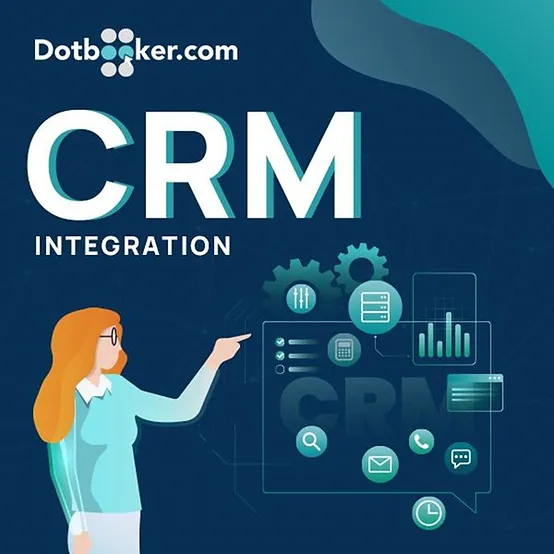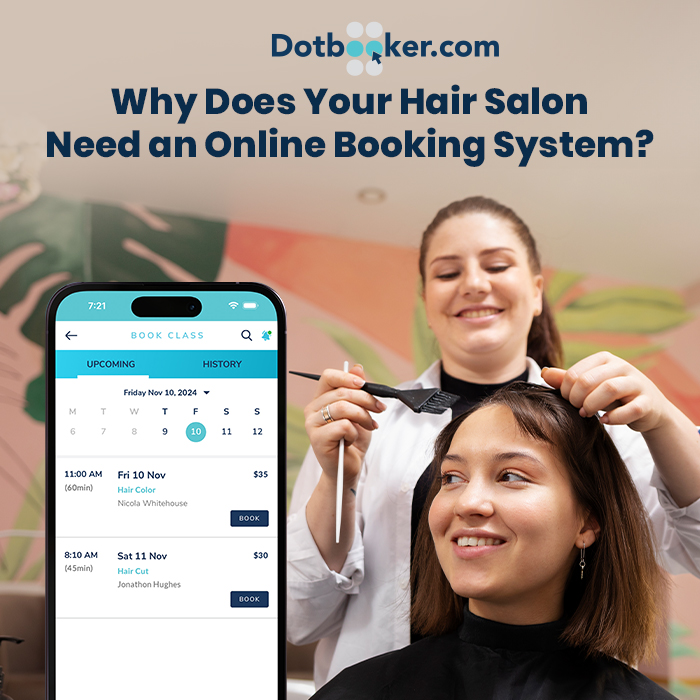
- By Dotbooker Team
- Jun 25, 2023
- 886
Planning For CRM Integration? Here is a Checklist
The current business ecosystem demands organizations to adopt a customer-centric approach and build long-term partnerships with customers. It is no more brand-based business, rather it is a customer-based business today.
As per McKinsey insights, organizations that aim to lead a customer-centric approach should gather a comprehensive view of the entire customer journey and focus on the elements that drive customer experience.
Therefore, most businesses today are implementing CRM solutions to decode the customers’ needs and meet their expectations. CRM software enables business owners to tap on every touch-points of the customer’s journey and assist them in enhancing their experience in all possible ways.
However, to derive true value from CRM solutions, it is essential that CRM seamlessly integrates with the third-party tools. CRM integration is a critical process and requires systematic planning to execute it.
CRM integration is a process of integrating third-party tools and applications to extend the functionality of the CRM software. It eliminates the need to go back and forth between systems or software.
Since all the third-party tools or apps are accessed from a single interface, CRM integration saves time in managing various business processes separately.
It offers enormous benefits to the organization in terms of increasing productivity and efficiency. For instance, a company integrates a BI (Business Intelligence) tool with a CRM system that allows the organization to analyze customer data on a deeper level.
It analyzes data from various dimensions and identifies the loopholes in customer relationship management. Likewise, numerous third-party tools can enhance CRM functionality and optimize business efficiency.
Some of the top CRM integrations that organizations can consider are email integration, marketing automation tool integration, ERP tool integration, communication tool integration, social media integration, e-commerce integration, accounting tool integration, etc.
Approaches for CRM Integration
Usually, CRM integration can be done in three ways.
-
Purchase all tools and services solely from one provider so they can be easily integrated.
-
Companies can customize their solution and write code to integrate third-party tools. It is a less preferable method because developers need to code every time there is an update in the third-party tool again.
-
Integrating third-party tools through API (Application Programming Interface) allows applications to communicate with each other without writing the code and thus, saves developers time.
Checklist For CRM Integration
- Align third-party tools to business needs
There are tons of third-party tools available in the market, but it is necessary to shortlist the tool that caters to business needs. Without understanding the actual goal of CRM integration, the third-party tool cannot yield high ROI.
Business owners should perform a thorough analysis of the third-party tool and should select the tool that helps to solve their problem or augment the current CRM capabilities.
- Data cleaning
Integrating data with third-party tools can become effortless when data is standardized and structured. Data compatibility can become a major issue in CRM integration.
For smooth integration, the business owners should ensure that CRM data is cleansed and eliminate bad data such as duplicate data, missing data, and out-of-data.
Before initiating CRM integration, business owners should verify data on these parameters - accuracy, completeness, consistency, uniqueness, and timeliness.
- CRM Integration: Dependencies & Support
For some third-party tool integration, business owners have to rely on certain dependencies such as software licensing, hardware and network requirements, libraries or packages, etc.
Sometimes the third-party tool does not offer its own API and requires a third-party connector to proceed with the integration process. So business owners should check whether the third-party tool providers offer their own API or need connectors.
It is a good practice to gather all the information about the dependencies required for CRM integration in advance as it helps to avoid last-moment chaos.
- Engage team early
Engage all the people involved in the CRM integration early on. It helps to get a clear idea of the individual's role and responsibility for the successful integration of CRM. Whereas C-suite can share their valuable inputs and expectations on the CRM integration.
- Documentation
During the initial stage of CRM integration, it is essential that the team member or whoever is handling the integration properly document the process. These notes or documents can be helpful for existing or new staff to understand how third-party tools work.
It saves team leaders time training the staff and allows them to troubleshoot problems by themselves. So documenting the CRM integration process is quite essential, and team leaders should plan in advance on how to document it.
- Security
Security is an important aspect of CRM as companies expose their confidential data to third-party tools. The integration is mainly done through API (Application Programming Interface), which acts as a middleman between two applications.
if the API is loosely coupled or not connected well with the CRM system, it could become vulnerable to cyber attacks such as SQL injection and cross-site scripting.
Business owners must cross-check all security measures offered by API vendors, such as strong passwords, data encryption, permission-based access, etc., to safely connect with third-party tools. Business owners should also see that it has a data backup plan in case the system crashes while transferring the data.
- Prepare contingency plan
Business owners have less control over third-party tool functionalities. In case there is any technical glitch in the third-party tools, then business owners should have in-house developers to fix the issues or have to find out a workable solution.
Also, business owners should check what kind of customer support third-party tool providers are offering and whether they respond promptly.
Conclusion
The script of successful business models is etched around customer relationship management and their ability to unlock the customers’ needs. In their goal to strengthen their bond with customers, businesses should opt for integrating CRM with their existing functionalities.
CRM software plays a pivotal role, and there is an increasing demand for CRM solutions. As per Statista, the global revenue of customer relationship management software is expected to reach $120.30 billion by 2027.
CRM software can achieve its full potential when it is integrated with third-party tools, but CRM integration is a delicate process, and business owners could face many challenges while integrating it, such as security, data consistency, data interoperability, etc.
A simple error in CRM integration can prove catastrophic for business. It is essential that business owners strategically plan CRM integration and take the right approach toward it.
Popular Blogs

- Oct 20, 2022
- 4699

- Sep 08, 2024
- 4014

- Nov 11, 2022
- 3460

- Sep 16, 2024
- 2839
Transform your business now!

Get an expert consultation for your business's streamlined operations.